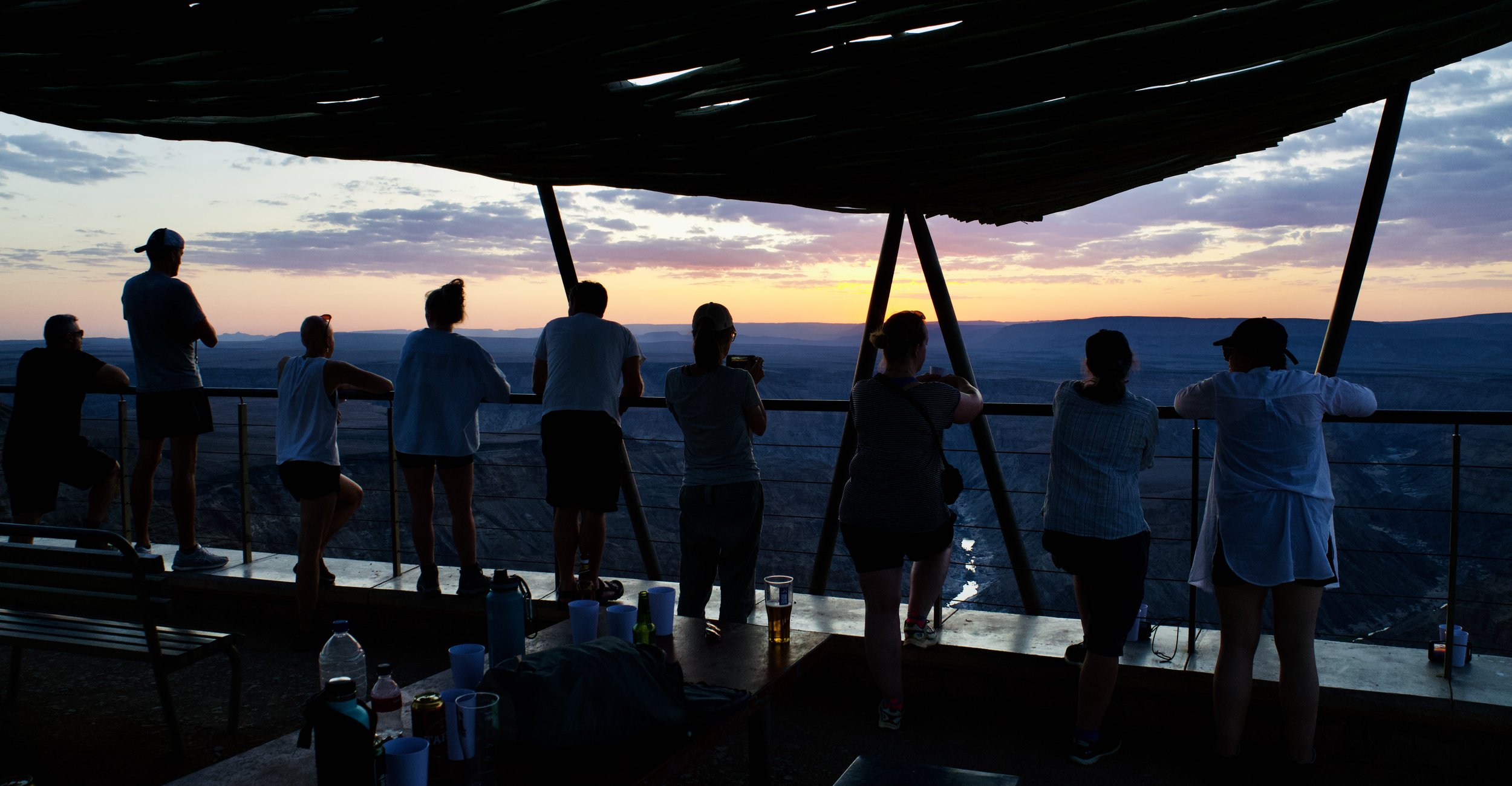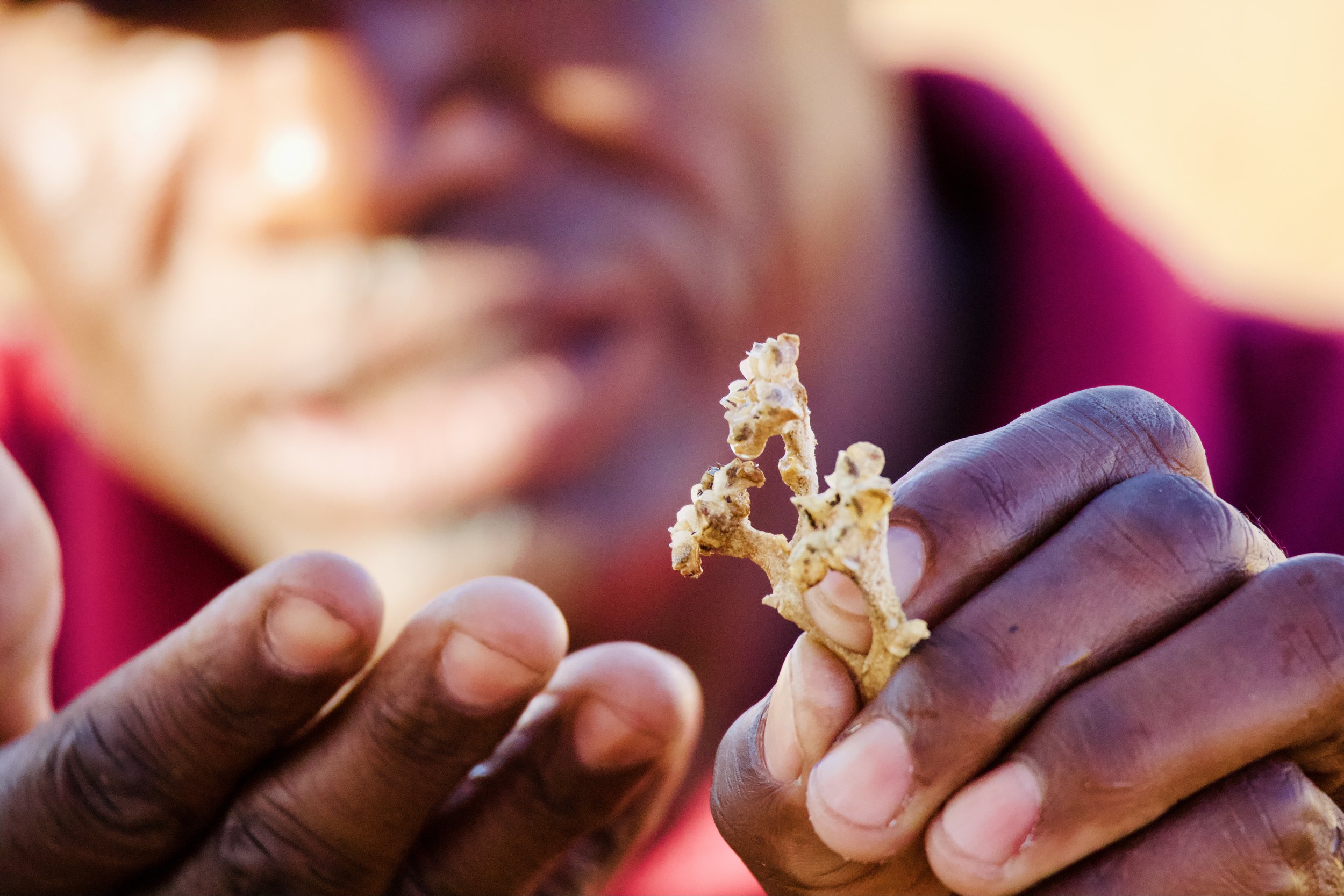When it comes to Africa, some places get all the attention. There’s the pyramids in Egypt, the the world-famous Victoria Falls, and the Serengeti, a national park with so much wildlife its gained world heritage status. In the shadow of these icons, it seems like it would be tough for a relatively little-known country like Namibia to compete. But since crossing over the border from South Africa, we’ve discovered the merits of flying under the radar. No wonder our tour guide, Laban, described the former colony—which offers Africa’s signature beauty without high prices or huge crowds—as one of the continent’s “hidden gems.”
We spent our first night in Namibia camping above the Orange river, which marks Namibia’s border with its more famous Southern neighbor. The next morning, we got up early to paddle a portion of the 1,500-mile river before boarding the overland truck that will carry us through Namibia’s diverse collection of sand dunes, savannah, and game parks over the next few weeks.
One of our first stops was at Fish River Canyon — the world’s second largest canyon after the Grand Canyon in Arizona — where we sipped wine while watching the sunset with our new friends and fellow travelers. Most of the group, which represents a mix of nationalities spanning Canada, Europe, England, and Australia, will be leaving the tour at Victoria Falls, but a few of the Brits will be traveling with us all the way to Nairobi.
We got up the next morning before sunrise to venture into the Namib Desert, which encompasses Namibia’s western coast and counts some of the world’s tallest sand dunes, including Big Daddy, Big Mamma, and Dune 45. As it turns out, it’s rather difficult to climb a sand dune, but our group reached the top of Dune 45 just in time to watch the sun rise over the world’s oldest desert, which — in terms of age, at least — puts the Sahara to shame. Essentially rusting with age, the dunes are especially striking because they rise up from a salt pan filled with petrified trees, creating an eerie study of contrasts.
The next morning, we continued driving north towards Namibia’s “Skeleton coast,” named for the many shipwrecks that have occurred in this area. Battling strong winds, currents, and fog, many European explorers found the Namib’s high levels of iron ore — which lend the desert sands their rusty red hue — also scrambled the magnets in their compass, sending their ships strait to the bottom of the Atlantic. To break up the long drive, we slept in a bush camp half way between Sossesvlei, as the salt pan is known, and Namibia’s northwestern coast, where we took a desert tour led by a member of the San tribe, the native bushman who lived in this area.
On the following day, we finally made it to Swokopmund, the main gateway to German South West Africa, as this area was known during its colonial days. Over a century later, the town recalls its German heritage with beer halls, bakeries, and lots of German lager. After Germany lost its African colonies in the wake of WWI, Namibia became part of South Africa (and the apartheid state) before finally gaining independence in 1990. Much of this history is on display at at the Swokopmund Museum, which uses a quirky collection of ox carts, taxidermy animals, and relics from various shipwrecks to tell the town’s eclectic story.
But the best part of Swokopmund — in addition to the opportunity to trade our tents for actual beds in little faux German “chalets” — was its central location on Nambia’s Skeleton coast, offering options for several cool day trips. Left to fend for ourselves for the weekend, half our group booked a dolphin/seal cruise departing from nearby Walvis Bay, where we enjoyed oysters, sherry, and beer while counting scores of dolphins, whales, and fur seals, often in the company of the captain’s pet pelican, Lady Gaga, who frequently swooped in to say ‘hello.’ We spent the afternoon off-roading in sand dunes around Sandwich Bay, where Namibia’s desert meets the sea.
After two nights of relative city living — albeit in a rather bland, utilitarian town— we drove inland towards Spitzkoppe, whose red rocks and boulders instantly channel Utah’s Zion National Park or Monument Valley. Spitzkoppe (which aptly translates in German to “Pointed Dome”) is also famous for its 2,000 to 4,000-year-old rock art made by nomadic San tribes, who we learned more about after visiting a traditional San village.
Many of these paintings have been lost to time, but depictions of elephants, zebras, and rhinos are still clearly visible — and hopefully, a fortuitous sign. We’ve had a great time exploring Namibia’s outstanding landscapes, but now we’re eager to see some actual elephants, zebras, and especially rhinos, which we didn’t see in Kruger. Fortunately, our next stop is supposedly one of Africa’s best places to spot wild rhinos: Etosha National Park.
By Jen Swanson







